In a previous post I wrote that three percent of Norway is glaciated but until today, we had seen no evidence of that. In part, this is because glaciers are found on only one percent of Norway’s mainland and in part because our trip took us closer to the southernmost point on the Norwegian mainland (which is at about 57º north latitude) than to the northern realms where most of the glaciers reside.
What we will see today is the rapidly retreating tip of the Birksdal glacier (Birksdalsbreen in Norwegian) which is part of the Jostedalsbreen. With an area of 487 square kilometers, the Jostedal Glacier is the largest on the mainland of Norway. (The coastline of Norway is populated by something on the order of 50,000 islands thereby necessitating this differentiation.) With only three farther south it’s among the southernmost as well. It’s also the largest on the European continental mainland.
As we drive along the road from Balestrand to the Birksdal Glacier, passing Mundal, the ancestral home of the family of a former U S Vice President (I believe in you. You can deduce whose ancestors lived here.)
and getting our first glimpse of a Norwegian Fjord horse,
let’s learn a bit more about the intertwined fates of the three Scandinavian countries by looking at what we now refer to as the Kalmar Union that, for a time, joined the three countries (and Finland which was then a part of Sweden) under a single monarchy.
You might recall that King Haakon V moved his capital from Bergen to Oslo mainly to stem what he viewed as inappropriate foreign influence on his court. The Scandinavians were concerned about perceived German expansion into the Baltic in part by using the Hanseatic League. And it all starts with a royal wedding (but not this one).
Margaret, the daughter of King Valdemar IV of Denmark married King Haakon VI of Norway and they had a son, Olav. Now, Margaret was one sharp woman and when Valdemar died and Haakon ascended to the throne, she managed to have Olav declared the heir to the throne in Denmark. However, Olav was only six years old at the time, so someone had to be named Regent until he came of age. That someone was Margaret.

[Queen Margaret from Wikipedia – Public Domain.]
Well, Haakon VI goes and dies in 1380 and young Olav inherits another throne while Margaret assumes another Regency because Olav is now only ten years old and still not of age. Death continued to stalk the males in Margaret’s life and Olav died in 1387 at age 17 before he comes of age and officially assumes the throne. By 1388 Margaret is now officially installed as the Regent of both Denmark and Norway. Her next step is to adopt her sister’s grandson, rename him Eirik (he was born Boguslaw in Pomerania which is today a region between Poland and Germany) and have the Norwegian Council recognize him as heir to the throne in Norway. The country, having been rather devastated by the black death, was not in a particularly strong position to resist her “suggestion” at the time.
Meanwhile, in Sweden, leaders of some of the Swedish nobility were battling with King Albert of Mecklenburg (a man of German parentage). These chaps, in 1388, elected Margaret as regent in the parts of Sweden that they controlled. Two significant events came to pass in the very next year, Erik came of age and assumed the throne in Norway and the nobles deposed King Albert of Mecklenberg. With the assent of the nobility of both countries, Erik added Denmark and Sweden to his rule.
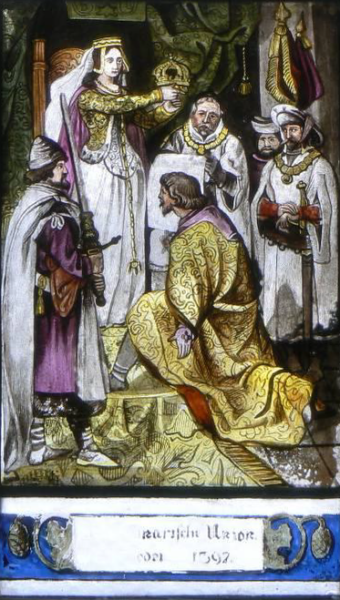
[Image of Margaret placing the crown on Erik from Wikipedia – Public Domain.]
The agreement was formalized with a treaty signed in Kalmar Castle on the southeast coast of Sweden. With some periods of strife, particularly centering around the transitions from one monarch to another, the treaty held intact for about 130 years. During that span, power became more and more centered in Denmark and, while the Norwegians had little to say about it because the country was still recovering from the plague, the Swedes were also less than happy.
The Danes, you see, were frequently at war with parts of Germany that were important trading partners for the Swedes. Hoping to quell persistent Swedish attempts at rebellion several of which had met with some success. King Christian II of Denmark invaded Sweden in 1520 and retook the capital. In an attempt to secure his power Christian called many Swedish nobility and church leaders to Gamla Stan (the old city of Stockholm) on 7 November 1520 with a promise of immunity.
This was not quite his true intention. By 9 November some 82 to 90 Swedish bishops and nobles had literally lost their heads in what is rightfully called the Stockholm Bloodbath. The Scandinavian countries had not yet fully broken with the Catholic Church and, in a cynical display of duplicity, King Christian announced to the Swedish people that the beheadings were necessary to avoid a papal interdict while telling the Pope (Leo X – the Pope who excommunicated Martin Luther) that the soldiers in his forces had committed unauthorized acts of vengeance.
In the long run, even this attempt at controlling the Swedes failed and on 6 June 1523, the Swedes elected Gustav Vasa as King Gustav 1 though he wouldn’t be officially crowned until 1528. Understandably, the Swedes still refer to Christian II as Christian the Tyrant and some 460 years after Vasa’s election, 6 June became Sweden’s National Day.
Way over yonder.
What’s that I see in the distance? Could it be a glacier? I believe it is.
The tour operators had arranged for us to ride the little electric carts that have replaced the Fjord horse drawn sledges that previously transported visitors to a point that’s a short walk to the lake at the base of the glacier and the ride included passing close by a waterfall. Progressing up the hill, we passed signs that mark the glacier’s retreat over the last few centuries. Frankly, we passed too many of them and passed them too quickly for me to determine whether the retreat is accelerating which I think it is. And here’s why.
We reached the closest accessible point which is a lake (okay, maybe an oversized pond) and what I can show you is this picture of the glacier on 18 July 2006 (taken by Jens Vinsrygg and downloaded from Wikipedia)
and this one that I took on 26 July 2015
and let you be the judge. If you’re wondering, I did cup a few mouthfuls of water from the lake. It was quite cold, as I’m sure you’d imagine, and had a bit of a mineral taste to it but not a very strong one. I found it curiously refreshing.
Several of us decided to eschew the cart (or, as the operator amusingly terms it Troll) ride and walk all the way down the hill to the small restaurant where we’d have lunch. I spent a good part of the walk down with one of the Aussies, Frank W. Although we rode on different buses, by this point in the trip, Frank and I had established a very friendly connection that solidified on the Aurlandsfjord cruise where we found that we shared a broad intellectual curiosity. I can only ask you to imagine the two of us discussing the curiosities of quantum physics as we sailed through this spot of idyllic natural beauty.
But the day wasn’t quite finished. And I’ll pick up the story as we cruise the Geirangerfjord to the town of Geiranger (GAY-rahn-grr) in my next entry.
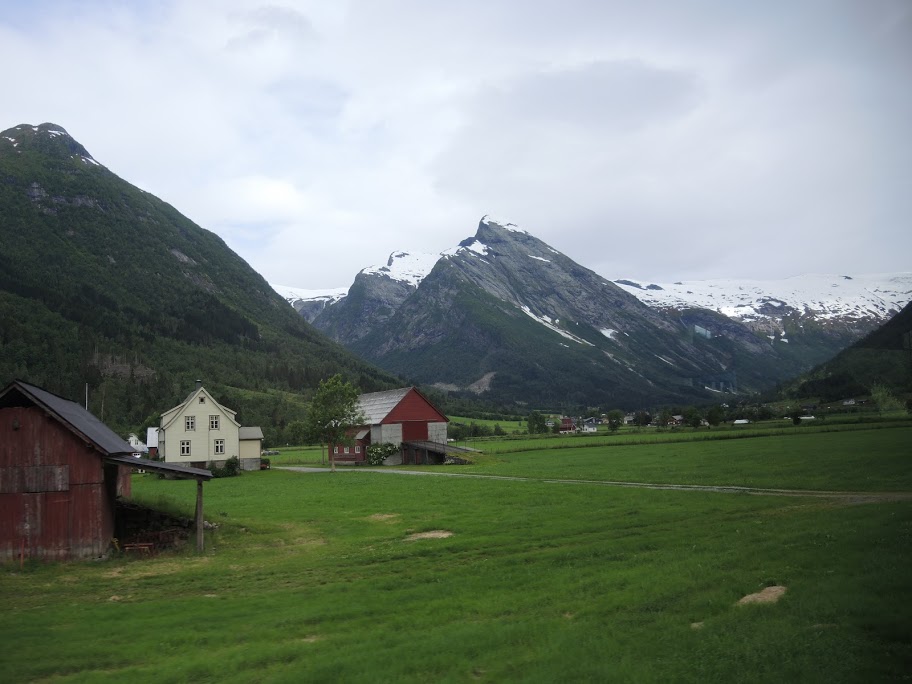
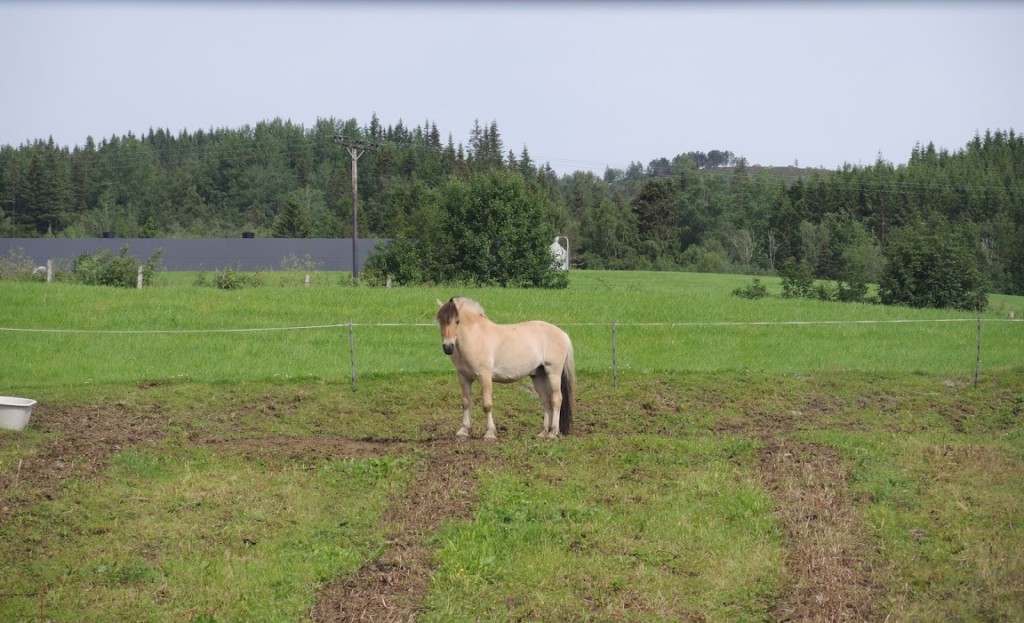
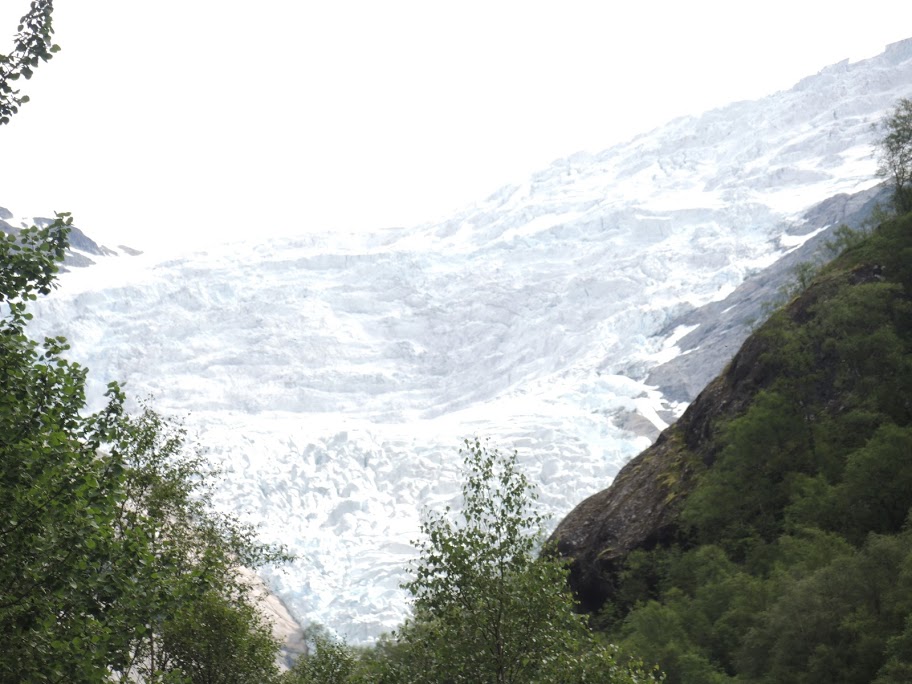
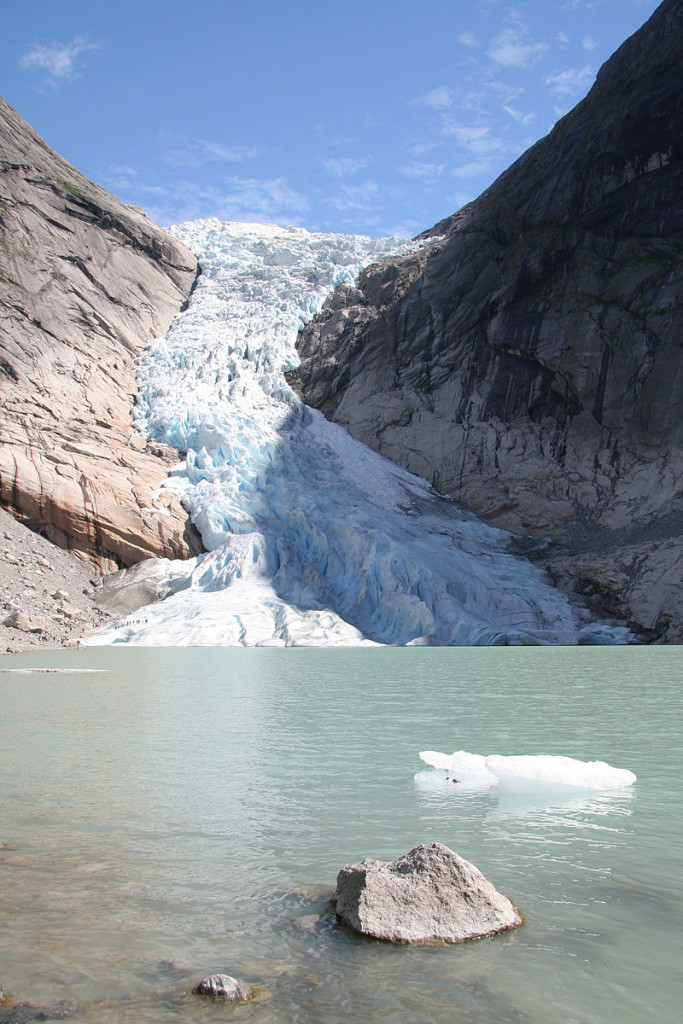
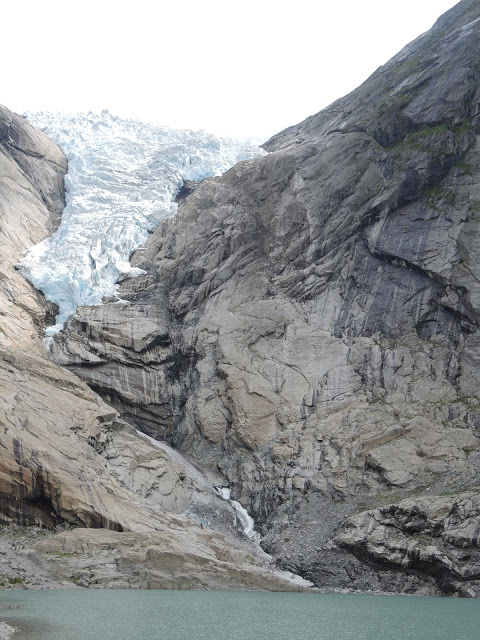
Many of the pictures of the glaciers remind me very much of Alaska.
I thought the comparison of my photo and the glacier just 9 years earlier was particularly pointed and a bit scary.
We had the same experience at one of the major glaciers in NZ. Also, the glaciers at Glacier Park in Montana are disappearing quickly as well. But there is no climate change…